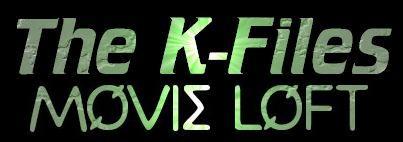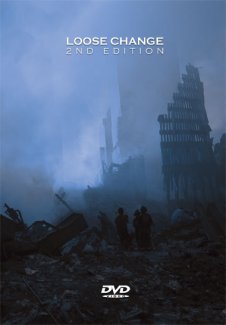Review: Loose Change 2nd Edition (2006)
Directed by Dylan Avery
Written, produced, and edited by Dylan Avery, Jason Bermas, and
Korey Rowe
Distributed by Louder Than Words
Runtime: 82 minutes
The events on 9/11 are a difficult subject to approach. With the
debate between what really happened on that day being muddied by
extremists on both sides, coupled with the enormous scope of the
investigation, wading through the mountains of evidence and
misinformation can feel like a lesson in mass confusion. So
concealed by the fog of passing time, fleeting memory, and the
often overwhelming nature of our Internet and information based
society, the truth, it seems, has been lost to our divisive,
post-9/11 world.
I'm not an expert when it comes to political sciences. I don't
know squat about thermodynamics, physics, or even basic
architecture. No, what I do is watch movies--be they
entertaining or educational. Most recently, I watched director
Dylan Avery's documentary film,
Loose Change 2nd Edition.
I struggled for a while deciding on how best I should review
this movie. Who am I, an admitted novice with only a casual
interest in conspiracy theory, to judge the merits of this
highly controversial and disputed documentary? Ultimately, I
chose to review it the only way that I could: through the eyes
of a skeptical American eager to gain a better understanding of
the world around him. I think when it comes down to it, it is
this demographic that the film is aimed towards anyway. So with
my salt grains at the ready, I delved into the world of Loose
Change...
At nearly and hour and a half long, I was expecting to get hit
by a barrage of dates, names, eyewitness reports, and video
analysis. Even so, I was nowhere near prepared for the
relentlessness of this movie's pacing. In the first few
introductory minutes alone, narrator Dylan Avery goes through
enough prior knowledge and government-sponsored terrorism
documents and news articles to make my head spin. He covers
everything from the declassified Operation Northwoods papers to
the technical specs on Boeing aircraft and their remote piloting
capabilities. Also of note in these scenes, the many strange
coincidences regarding military drills and training programs
that took place on that day are discussed. Eerily similar to the
London subway bombings that would follow a few years later, it
seems highly suspect that in the months leading up to it and on
the exact day itself, the Pentagon, along with other government
and military agencies, was planning for just such an attack.
Right off the bat, I think Loose Change does a good job
in at least putting some cracks in the foundation of the
credibility and believability of the official 9/11 conclusions.
If those in the United States government have conspired to
conduct false-flag operations with the goal of furthering
international agendas in the past, why should we trust that it
will never happen again?
From here, Loose Change moves into the thick of the
attack on the Pentagon. Of all the discrepancies on that fateful
day, the most damaging, in my mind, to the official
investigation have to do with the evidence regarding the
Pentagon. Avery does an admirable job in this segment detailing
the hard physics of aviation and in analyzing photographic
evidence. Again, although I can't in any way verify that the
data is legitimate, taken at face value, the 3D computer
renderings used to graphically document the plane's path into
the structure are highly convincing and used to great effect. To
be able to visualize a super-imposed aircraft over photographs
of the Pentagon's damage speaks louder than any flight
instructor giving testimony as to the competency of the alleged
hijacker's piloting skills. Photographic comparisons between the
Pentagon crash site and those of other plane crashes in the past
were also quite telling. As a whole, it was this evidence that I
retained most vividly at the end of the film. Definitely a
high-point for me.
Next, the movie goes on to cover the destruction of the World
Trade Center and, more briefly, the crash of Flight 93.
During this segment, Avery walks a fine line between factual
investigation and downright speculation. On the one hand, the
multitude of first-hand eyewitness testimony by everyone from a
janitor inside one of the towers to NYC firefighters, he makes a
good case for the theory of multiple explosions and a possible
controlled demolition. Moreover, video evidence showing smaller
plumes of smoke well ahead of the collapsing towers does give
credence to the idea the there were explosives planted in the
buildings. However, as the adage goes, extraordinary claims
require extraordinary evidence--and frankly, I just don't feel
there was enough presented to close the case on the subject.
There are oddities, to be sure, but a smoking gun there isn't.
And quite unfortunately, the most likely candidate for such a
smoking gun, the collapse of WTC building 7, receives
comparatively little coverage.
Then Loose Change kind of lost me. As updated from the
first edition of the film, the Flight 93 scenes focused less on
the confusion regarding possible shoot-down orders and more on
the outlandish (and nearly impossible to prove) theory that 93
wasn't brought down, but was in fact diverted to an airport in
Ohio and had its passengers removed (of whose fate even Avery
admits we will never know). He also goes on to claim that
perhaps the cell phone calls from those on the plane--the major
piece of evidence that disputes his above theories--were perhaps
faked using voice-duplication software that has been recently
developed by the DOD.
To borrow a phrase, this stuff is the real turd in the punchbowl
when it comes to getting credibility for these theories. The
video analysis? Great job. The eyewitness and expert testimony?
Very convincing. But why Avery felt the need to piece such
speculative theories together into an entirely improvable and
highly unbelievable scenario is beyond me. Likewise, a scene
from FOXNews' Hannity and
Colmes program, in which the hosts interview
controversial college professor Kevin Barrett, seemed completely
unnecessary and served only to show the arrogance and extreme
nature of certain 9/11 truth movement members.
In the ending credits sequence, Avery asks all of his viewers to
find their own evidence and to come to their own conclusions. He
is careful to say that the evidence he reports and the theories
presented in Loose Change are the outcome of his own
investigation--and that we would do good to not believe him at
face value. I think therein lies the true success of Loose
Change. It's not so much that this movie proves anything
beyond a shadow of a doubt, but, some of the more extreme
theories aside, it absolutely presents a convincing array of
evidence. Evidence that, at the very least, brings doubt to the
official government report. I applaud Avery and crew for having
the courage to put their necks on the line to make this film and
get this info out to the public. And I strongly hope that the
attention it is receiving will help bolster this worthwhile and
necessary debate.
Ratings:
Information: 9
Editing: 8
Audio/Video: 9
Overall (not an average):
9.0
~Khyron, 2007


